With the end of the Beijing Olympics, exile-Tibetans will no doubt be taking a well-deserved rest from protests and demonstrations though Nepal (Bravo!) seems determined to go on a while longer. It is really important to take a break but make it a short one because 2009 is coming and it will be the 50th anniversary of the Lhasa Uprising and our exile from home. We absolutely need to recover our strength and clear our heads to plan for the next phase of the rangzen revolution.
This brief R & R should ideally provide us not only rest but also inspiration and ideas. I cannot think of a more effective way of accomplishing this dual purpose than by sitting back with a tall drink and watching movies — especially (in this instance) movies of freedom struggles. I put together a list of such films for a project that I hope to get underway sometime in the near future. Anyway, here is the list and an outline of the project, Cinema ’59, for the reader’s pleasure and edification — to put it in an old fashioned way.
Cinema ’59
FILMS OF FREEDOM STRUGGLES
The cinema is for us the most important of all the arts.
V. I. Lenin
 Though the whole Communist experiment has deservedly failed, the Russian Revolution’s use of the cinema to spread its political message and galvanize its mainly rural population, is certainly something that the Tibetan freedom movement could emulate to spread and keep the Rangzen message alive among Tibetans and friends.
Though the whole Communist experiment has deservedly failed, the Russian Revolution’s use of the cinema to spread its political message and galvanize its mainly rural population, is certainly something that the Tibetan freedom movement could emulate to spread and keep the Rangzen message alive among Tibetans and friends.
The Russian Revolution of 1917, besides fulfilling its primary political goal, also sparked off a revolution in the way the function of entertainment and art, especially cinema, changed to become a powerful tool of social and political transformation. Lenin appreciated cinema’s value and despite civil war and scarce resources, the Soviet revolutionary cinema was established, reaching even the remotest provinces by train. 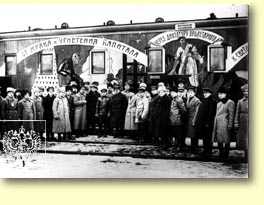 Such “Agit-trains” spread the Soviet message and led to the dynamic soviet cinema of the 1920s which “shook the world” with a new heroic style – pioneered by such directors as Eisenstein, Pudovkin, Kuleshov and Dovzhenko, and documentary makers, notably Vertov and Shub.
Such “Agit-trains” spread the Soviet message and led to the dynamic soviet cinema of the 1920s which “shook the world” with a new heroic style – pioneered by such directors as Eisenstein, Pudovkin, Kuleshov and Dovzhenko, and documentary makers, notably Vertov and Shub.
Taking into account the fact that Tibetan society is not extensively literate, and that even among educated people there is not much of a reading habit, the use of cinema to promote the rangzen struggle could prove to be an effective alternative. I implemented the idea it in a small way at the Amnye Machen Institute where we screened The Battle of Algiers , Avad and other films for young Tibetans of Dharamshala.
Film Library on Tibet
This aspect of the project could just be started off by providing a list of feature and documentary films on Tibet. A basic catalogue was put together by Sonam Dhargay la in the 80s for the Office of Tibet in New York, and the Amnye Machen Institute created a more extensive digital catalogue. The AMI database provides detailed cross-references, selection of films by key-words, and also a useful synopsis of the film’s content. A more ambitious follow-up undertaking would be the creation of an actual film library (in New York City for instance) of documentary, shorts and features on Tibet that Tibetans and friends could borrow for educational, fund-raising, promotional and awareness-raising purposes
Films by Tibetan Directors
Cinema ‘59 could also provide a forum for aspiring Tibetan filmmakers who, at the moment, receive little acknowledgement, encouragement or support elsewhere. Old and new Tibetan films could be discussed on this website. Interviews with the directors, visual material, and documentation could also be carried. The filmmakers could also file accounts of their current projects with accompanying visuals. I have nearly finished an essay on Cinema in Tibet which could provide the historical and sociological background for the undertaking. Readers can expect this essay to be posted in a few weeks.
World Cinema of Freedom Struggles
Though at the moment there may not be enough Tibetan made films for a sustainable program of social and political education in our society we could use films of freedom struggles and revolutions from other countries to educate and inspire our people. Therefore one aspect of Cinema ’59 should be the selection and screening of such films to Tibetan communities and groups everywhere. An extensive list of such films, videos or DVD’s (with accompanying information) could be considered. In the case of Tibetans in isolated settlements in India and Nepal a touring “Agit” van or something like that could perhaps be attempted later by organizations as the TYC and others.
To make such films accessible to older Tibetans and Tibetans inside Tibet, such films as Gandhi could be dubbed in Tibetan and DVDs sent to Tibet. I think TIPA attempted to dub The Battle of Algiers into Tibetan.
A Personal List
This list contains a variety of films, not all political or specifically about freedom struggles but most of which have somehow inspired or helped me hang in there. The artistic quality of the films vary considerably.
 John Adams, 2008, USA, Tom Hooper.
John Adams, 2008, USA, Tom Hooper.
Americans had their rangzen v. middle-path wrangle in 1775 and the first few parts of this HBO 7-part miniseries, depicts the great national debate at the 2nd Continental Congress at Philadelphia between Adams, Jefferson and those calling for independence and others seeking reconciliation with Britain. I was completely mesmerized by the clash of the two opposing parties but also by the behind-the-scenes negotiations and maneuvers which finally persuaded the delegates to sign the declaration of independence. Some of the speeches and statements at the Congress seem made-to-order for our critical situation right now. History is not romanticized in this biography of America’s least understood and most underestimated founding fathers, John Adams, but is all the more believable and emotionally engaging because of it. This is a 502-minute series that has lots more than the segment I have discussed. Excellent acting all around and high production values. An absolute must see film for Tibetans.
The White Rose (Die Weisse Rose), 1982, West Germany, Michael Verhoeven. Academy Award winning film based on the true story of a group of students in Munich in 1942 who put their lives in danger by distributing leaflets telling the truth of what was going on in the concentration camps. Absolutely a must see for all young activists fighting for truth and freedom. Check out the White Rose web sites and memorials.
Battle of Algiers (La Battaglia di Algeri), 1956, Algeria/Italy, Gillo Pontecorvo. The quintessential film study of a nationalist insurgency against colonial oppression.
Lawrence of Arabia, 1962, USA, David Lean. See movie for the story of the Arab revolt against the Turks. Cautionary tale about how your revolution could get sold out by those (Lawrence et al) professing to be your friend. Amazing desert scenes. Also offers a suggestion or two on what to do about unwanted trains and railway lines.
The Lion of the Desert (Omar Mukhtar), 1981, Egypt, Moustapha Akkad. True account of Bedouin resistance against Mussolini’s occupation force in Libya. Inspiring in parts. A favourite with some older Tibetans in Dharamshala.
The Train, 1963, US, John Frankenheimer. The resistance saves French art treasures from the Nazis. Riveting action film. Nazi’s officer’s (Goering most of all) at least valued French art enough to want to steal it. The Chinese just destroyed everything.
Battleship Potemkin, 1925, USSR, Sergei M. Eisenstein, The classic film of the beginning of the Russian revolution.
Hot Winds (Garam Hawa ), 1973, India, M.S. Satyu. The story of a Muslim family during partition. Very poignant and insightful. Balraj Sahni is terrific.
La Marseillaise, 1938, France, Jean Renoir, Renoir’s epic filming of the French Revolution, beginning with the events of 1789 & leading up to the storming of the Bastille & the birth of the French republic.
Gandhi, 1982, UK, Richard Attenborough. Though the film takes a fair bit of license with history is hugely moving and absolutely inspiring. The thing I liked about the film was that it managed to show that Gandhi was not just a spiritual person but a man of action as well.
Alexander Nevsky, 1938, USSR, Sergei M. Eisenstein. The epic film of the defence of the Russia against invading Teutonic knights.
Les Miserables, 1995, France, Claude Lelouch. This version of Hugo’s classic tale is set during WWII. Scenes of resistance action and D-day make this an exciting film.
The Gathering Storm, 2003, US, Richard Loncrane. It is the mid 1930’s and everyone in power is sucking up to Hitler’s Germany (as they are now to Communist China). A lonely, sidelined but defiant Winston Churchill attempts to warn the world of this impending threat. But who will listen? A beautifully shot HBO film. Vanessa Redgrave as Churchill’s wife is fantastic.
The Sorrow and the Pity (Le Chagrin et la Pitié), 1969, West Germany, Switzerland, Marcel Ophuls. A classic documentary depicting the life of a French town during the Nazi occupation. 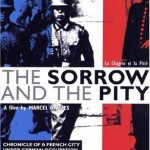 The story of cowardice and collaboration but also of heroism and the resistance. Powerful and insightful. Goldstein in his history of Tibet insists on pointing out that Chinese soldiers were well behaved in Tibet. Well, Ophuls shows you how Nazi soldiers would give their bus seats to old ladies and help farmers in order to deceive the French population
The story of cowardice and collaboration but also of heroism and the resistance. Powerful and insightful. Goldstein in his history of Tibet insists on pointing out that Chinese soldiers were well behaved in Tibet. Well, Ophuls shows you how Nazi soldiers would give their bus seats to old ladies and help farmers in order to deceive the French population
Braveheart, 1995, US, Mel Gibson. Not a bad film in spite of Mel’s posturing. The film also played a surprisingly influential part in the political changes that swept Scotland in the nineties, mobilising public opinion to aid the return of a Scottish Parliament after a gap of 300 years. The real William Wallace didn’t paint his face blue and he was a physically bigger and a more imposing man than Mel.
Rob Roy, 1994, US, Michael Bay. Another film of how the Brits misbehaved in Scotland and how a few brave Scotsmen stood up to them. Although the story here is fictional it is nonetheless as stirring and exciting as Braveheart. I actually preferred Rob Roy. The film also never soft-pedals the historical and political realities.
The Killing Fields, 1984, Britain, Roland Joffe. We’ve all seen this epic movie of the Cambodian genocide, but we should watch it again (and again) if only to 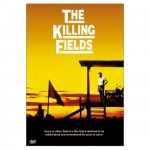 remind ourselves that all Pol Pot was doing was following the teachings of Chairman Mao. Haing S. Ngor, the Cambodian doctor who won an Oscar playing Dith Pran in the film wrote in his autobiography: “Except for their dark skins, everything about the Khmer Rouge was alien, from China. They had borrowed their ideology from Mao… like the concept of the Great Leap Forward. Sending the intellectuals to the countryside to learn from the peasants was an idea of the Chinese Cultural Revolution. Their AK-47s and their olive green caps and their trucks were Chinese. Even the music they played from the loudspeakers was Chinese, with Khmer words.
remind ourselves that all Pol Pot was doing was following the teachings of Chairman Mao. Haing S. Ngor, the Cambodian doctor who won an Oscar playing Dith Pran in the film wrote in his autobiography: “Except for their dark skins, everything about the Khmer Rouge was alien, from China. They had borrowed their ideology from Mao… like the concept of the Great Leap Forward. Sending the intellectuals to the countryside to learn from the peasants was an idea of the Chinese Cultural Revolution. Their AK-47s and their olive green caps and their trucks were Chinese. Even the music they played from the loudspeakers was Chinese, with Khmer words.
Director Roland Joffé, when discussing Dith Pran’s escape from the Khmer Rouge death camp, made this sage observation: “and yet there’s always a chance of life… and the strength that Haing had, that Dith had, was that they took risks. They weren’t victims.” Its something all Tibetans should ponder. Being a victim is not just a question of circumstance or history, but also of choice.
A Generation, (Part I of a War Trilogy) 1954, Poland, Andrzej Wajda (War Trilogy) A film about the Polish underground and the Warsaw resistance; specifically the story of a youth resistance group. You could call it a propaganda film of sorts, but it is also exciting and powerful.
Kanal, (Part II of a War Trilogy) 1956, Poland, Andrzej Wajda (War Trilogy). A group of partisans try to escape from the Nazis through the sewers of Warsaw. Very intense and dark but poetically uplifting at times.
Ashes and Diamonds, (Part III of a War Trilogy) 1958, Poland, Andrzej Wajda. The final part of the trilogy features Cybulski (the Polish James Dean) as a fighter in the first days of peace waiting to assassinate a Communist official. Least satisfying of the trilogy.
For Whom the Bell Tolls, 1943, US, Sam Woods. Hemingway’s story of an American volunteer fighting with partisans in the Spanish Civil War. Saw a re-run in Darjeeling as a schoolboy and was hugely impressed. The partisans seemed just like the Khampas at Mustang. Fell in love with Ingrid Bergman as María.
Bridge on the River Kwai, 1957, US, David Lean. A British colonel, taken prisoner by the Japanese, builds a bridge for them and in the end even gives up his life trying to save it, so obsessed by pride in his work that he has forgotten it will serve the wrong cause. Sounds familiar… Hmm.
Operation Daybreak, 1957, USA, Lewis Gilbert. Based on the true story of the assassination of Nazi leader Reinhard Heydrich by Czech agents parachuted into occupied Czechoslovakia by British Intelligence. Standard WWII action film but scenes of Nazi reprisals are disturbing, and the last quarter of the film is poignant and inspiring. A big hit at TCV in eighty(?).
Geronimo: An American Legend, 1993, USA, Walter Hill. The authentic bloody chronicle of the last Apache leader as recorded in the memoirs of one of the cavalrymen who hunted him down. Lots of violence but it is the injustice of the white man that is upsetting and makes you mad. It also has a real Indian actor, Wes Studi, in the lead. He’s convincing. It’s in bad form to quote from your own writing, but I have to repeat this passage from my Rangzen Charter: “Of all the millions of native Americans who suffered and died under the injustice and violence of the white man, only the names of great war chiefs like Geronimo, Crazy Horse and Sitting Bull are still remembered with respect by Americans. Those native leaders who tried to live peacefully under the white man and went to Washington DC to submit to the ‘Great White Father’ are forgotten.”
The Long Walk Home, 1989, US, Richard Pearce. A small but compelling film about the Montgomery bus boycott. The best feature film I have seen on the civil rights movement. Whoopi Goldberg is fantastic. A more effective and convincing film than better known works on the subject as Mississippi Burning.
Malcolm X, 1992, US, Spike Lee. Epic biography of America’s fiery black revolutionary, from his early days as a zoot-suited hustler known as “Detroit Red” to his pilgrimage to Mecca, as a Black Muslim — all with an broad sweep and vitality that illuminates personal details as well as political ideology.
Citizen King, 2004, US, Orlando Bagwell/Noland Walker. There are quite a few documentaries on the Civil Rights leader, but I liked this one as it was very balanced, showing Dr. King’s flaws (womanizing, poor health habits, questionable associations, etc.,) but emphasizing the good that Dr. King accomplished without compromising on his Gandhian philosophy. Another documentary worth watching is King (1978) directed by Paul Winfield.
American Roots Music (4 part documentary), 2001, US, Jim Brown. 200 years of music in America (some going back farther than that) is presented in this wonderful four-hour story that ties in the many peoples and sounds and styles. A continuous musical tapestry with excerpts (and also full-length performances in bonus disc) of live performances of all types: Folk, Country, Blues, Gospel, Western Swing, Bluegrass, Cajun, Zydeco, Tejano and Native American music interviews with performers. This documentary gives you a true feel for the importance of music in the struggle of ordinary people (especially blacks) for survival and freedom. Aspiring Tibetan songwriters and singers should check out the music of the old native American protest singer, Floyd Red Crow Westerman, and note how he gets his political message into a wonderfully traditional native singing style.
The Seven Samurai (Shichinin no Samurai), 1954, Japan, Akira Kurosawa. The ultimate lesson on why you must stand up to injustice and help others do so; also expect no thanks or rewards, just do it for the ing. I watch this film at least once a year to recharge my simshug batteries.
Carve Her Name With Pride, 1958, UK, Lewis Gilbert. Inspirational story of the allied spy Violette Szabo in Nazi occupied France. Standard story of wartime heroism and martyrdom, yet strangely moving because you know it really happened. Violette was captured by the Gestapo, tortured and executed. She received the George Cross posthumously. The first woman to receive this highest British award.
Charlotte Grey, 2002, UK, Gillian Armstrong, The fictional story of a British agent in Nazi occupied France who works with the French resistance to rescue her lover, a missing RAF pilot. God, what crap. Especially when you know that real women like Violette Szabo had given up their lives to fight the Nazis. The incredible thing is that so many other young women as Lilian Rolfe, Odette Hallowes, Yvonne Coremeau, and the incredibly beautiful Indian Sufi princess, Noor Inayat Khan (codename Madeline) had done the same and had parachuted into occupied France as agents. Lillian and Noor were captured by the Germans, and after being tortured and, God knows what else, executed at Ravensbruck concentration camp. At the Library of Tibetan Works and Archives in Dharamshala I found an old children’s book, Twenty Jataka Tales, about the former lives of the Buddha. It had been written by Noor Inayat Khan in 1939.
Casablanca, 1942, USA, Michael Curtiz. The ultimate WWII romance movie. Inspiring in parts, especially the defiant singing of the French national anthem in Ricks café. Yvonne a pretty French coquette, drinking with the Germans, and flirting with the chief Gestapo officer, has a turn of conscience and, with tears streaming down her cheeks, joins in the singing of La Marseillaise.
Elliot Sperling of Indiana University argues that visitors to present day Tibet (including experts) encountering a population going about its daily business and not expressing open defiance of Chinese occupation, and then concluding that Tibetans are satisfied with the status quo, invariably fail to take into account what he terms the “Yvonne factor” of dormant or suppressed Tibetan nationalism, which could be galvanized by a crisis or some unusual event, as it happened in 1979.
Spartacus, 1960, US, Stanley Kubrick. A must see. George Orwell, in one of his newspaper columns, reflected on the fact that though the ancient civilisations of Mesopotamia, Egypt, Greece and Rome had rested entirely on slavery, in the same way as modern society depends on electricity or fossil fuels, we cannot recall the name of a single slave, except perhaps for Spartacus. And we remember him “…because he did not obey the injunction to ‘resist not evil’, but raised violent rebellion”.
Crazy Horse, 1996, John Irvin (TV bio) Gripping story of the great Indian war chief leading the Cheyenne and Sioux nations against Custer and the US army. A very satisfying film. Especially when Custer gets his. Listen to Johnny Cash’s wonderfully sarcastic song Custer. “Now I will tell you buster that I ain’t a fan of Custer”… etc.
Mandela (documentary), 1995, US, Jo Mennel. A full and inspiring account of Mandela’s life and struggle. A must see. Also check out the A&E documentary Biography — Nelson Mandela: Journey to Freedom.
Cry, the Beloved Country, 1995, South Africa, Darrell Roodt. Based on Alan Patten’s classic novel this (the 1951 version) was the first entertainment feature film set against the backdrop of apartheid. Both films are well made and intensely moving.
Cry Freedom, 1987, UK, Richard Attenborough. Story of the murder of black activist Steve Biko by South African police, and the uncovering of the story by journalist Donald Woods. Political cinema at its best.
Amandla! A Revolution in Four-Part Harmony (documentary), 2002, US/ South Africa, Lee Hirsch. This stunning film tells the story of protest music in South Africa — but as it does so, it tells the story of the struggle against apartheid itself. Through archival footage and interviews with musicians, freedom fighters, and even members of the former government police, Amandla! creates a vivid and powerful portrait of how music was crucial not only to communicating a political message beyond words, but also to the resistance itself — how songs bonded communities, buoyed resistance in the face of bullets and tear gas, and sowed fear in the ruling elite. Also check out Rhythm of Resistance – Black South African Music (1990). Heard good things about it but haven’t seen it yet.
Beyond Rangoon, 1995, US, John Boorman. An interesting film on the conflict in Burma between the military junta and the dissident democracy movement. Ignore the contrived story of the “troubled” American doctor and watch the film for the freedom struggle of the Burmese people. Convincingly chaotic scenes of demonstrations, riots and military crackdowns. Aung San Suu Kyi makes a brief appearance. The actress doesn’t look very much like her, but hey, I’m not complaining. Even a brief fantasy darshan of this supremely courageous woman, is good enough for me.
Z, 1968, France/Algeria, Costa-Gavras. Left wing political thriller, uncovering the corruption of the military junta in Greece in the sixties. See it.
Missing, 1981, US, Costa-Gavras. Based on true events during the Chilean coup of 1973, this extraordinary film explores the disappearance of a young American writer, and the search for him by his wife and father. The tension and fear of living in a country under fascist military rule is graphically depicted. Helps you understand how people in Lhasa must live under the illusion of economic progress.
The Crossing, 2000, US, Robert Harmon. When it seemed to everyone that the American revolution was just about finished, George Washington pulled off a desperate surprise attack on the British army on Christmas day in 1776. An exciting story well told and historically accurate.
Joan of Arc, 1948, UK, Victor Fleming. The story of the 15th century French freedom fighter and visionary (in the literal sense) has been made into quite a few feature films. Fleming’s version sticks fairly closely to the historical facts and is worth watching for the young Ingrid Bergman as Joan and the sumptuous production values. The 1957 Saint Joan directed by Otto Preminger is also not bad. The latest version, The Messenger: The Story of Joan of Arc, 1999, directed by Luc Besson is not satisfying though it has John Malkovich as the conniving Dauphin. Carl Theodor Dreyer’s The Passion of Joan of Arc, 1928, is in black and white, silent, and devoid of scenery, costumes and extras but is, even now, regarded as a masterpiece of filmmaking and a great classic in film history.
The Battle of Neretva, 1969, Yugoslavia, Veljko Bulajic. Big budget nationalist film (with imported Hollywood actors) of Yugoslav partisans fighting against the Nazis, Italians and local Chetnik collaborators. A young man from Lhasa told me it was screened to the public in that city in the mid-seventies. He said he enjoyed the film but not for the reasons the Chinese intended. The film was also screened at TCV in Dharamshala. Kids loved it.
Enemy at the Gates, 2001, USA, Jean-Jacques Annaud. In the winter of 1942, the German and Russian Armies meet in the great Battle of Stalingrad, one of the most murderous and critical engagements of the Second World War. Enter into this horror a young Russian soldier, formerly a peasant boy with an extraordinary ability as a sharpshooter. The Russian sniper soon gains fame after killing a record number of German officers causing the Germans to bring in their own master sniper: a war weathered Major who always accomplishes his mission no matter what the cost. With the Battle of Stalingrad raging around them, these two men must now fight each other. And this is a real story. With even a true (and moving) romantic sub-plot thrown in! Surely Academy Award material, you would think? But Jean-Jacques Annaud manages to squander such genuinely epic material as he did with Seven Years in Tibet. Bad casting, bad script, and a complete inability to move beyond usual Hollywood stereotypes. Still some amazing battle scenes, and great moments with Bob Hoskins chewing the carpet (and drapes) as a brutal Khrushchev, chief political commissar of beleaguered Stalingrad.
Exodus, 1960, USA, Otto Preminger. Reverential film version of Leon Uris’s blockbuster novel about the founding of modern Israel. Lots of action and romance, though clunky in parts. Way too long at four hours. After seeing the film Mort Sahl (the comedian) is supposed to have said “Otto, let my people go.”
The Pianist, 2002, France, Poland etc., Roman Polanski. An adaptation of concert pianist Wladyslaw Szpilman’s memoirs about his experiences in Nazi occupied Warsaw. Incredibly moving film. No heroics. Sometimes all you can really do is just survive that sort of mega-shit. If you weren’t before, you will become a Chopin fan after the film.
The Motorcycle Diaries (Diarios de motocicleta), 2004, USA, Argentina etc., Walter Salles. True life account of Che Guevera’s travels and adventures as a young man on the road in South America. The film captures the breathtaking view and diversity of the continent. The social and political problems of Latin America that drove Che to become a revolutionary are presented in an intelligent and subtle way. Bit of left-wing church bashing at the Amazonian leper colony scene where Catholic nuns wear protective gloves to treat patients. The “enlightened” Doctor Che dramatically refuses a pair. The problem for me was while the simple nuns, no matter how medically ignorant they were, had dedicated their lives to aiding the lepers, Che was just passing through. So the revolutionary condescension grates a bit here. Che’s mythic swim across the Amazon has overtones of Mao’s dip in the Yangtze. Revolutionary hero battling raw nature kind of stuff. Che’s companion Alberto is a delight. All young Tibetans who have buzzed around the Himalayas on their Enfields will love this film.
Hotel Rawanda, 2004, USA, Terry George. As Rawanda descends into genocidal madness, hotel manager Paul Rusesabagina sets out to save his family. But when he sees that the world will not intervene in the massacre of minority Tutsis, he finds the courage to open his hotel to over 1,200 refugees. Paul uses his wits and words to keep the rabid Hutu militia from massacring the refugees (and his own family). One man, does, it seems, make a big difference if he takes the difficult decision to do so. Also a good lesson not to expect the help of America, the UN or any other big power if you don’t have oil or big business opportunities in your country.
Pathfinder (Ofelas or Veiviseren), 1987, Norway, Nils Gaup,. The first film in the Sami language. A young Sami boy in Lapland (northern Norway, Sweden and Finland) 1000 years ago, is captured by black-clad savage invaders who want to wipe out the boy’ peaceful tribe. What can he do to save his people? Exciting action-packed film shot against a frozen landscape of breathtaking beauty. Won the ‘87 Academy Award for best foreign film. A member of the Saami parliament I met in Dharamshala told me that this film had had a tremendously inspirational effect on young Sami’s who were loosing touch with their own history and culture.
Rabbit Proof Fence, 2002, Philip Noyce. Incredibly harrowing and rage-provoking film about three little aborigine girls who escape from a white orphanage to travel across 1200 miles of Australian desert to get home. The whites who had forcefully taken the girls from their mothers to train them to become servants, see themselves as only helping these uncivilized people. Hey, where have we heard that one before?
Deliverance (Sadgati), India, 1981, Satyajit Ray. The ultimate cry of rage against injustice and oppression. In this Ray masterpiece, Dukhi, a low caste chamar is to all purposes worked to death in a single day by a heartless Brahmin. Based on a Munshi Premchand short story, with outstanding performances by Om Puri and the inimitable Smita Patel. I saw this Doordarshan production on Indian TV in 1983. Seems unobtainable now on either DVD or video. If anyone has a copy please let me know.
The Home and the World (Ghare Baire), India, 1984, Satyajit Ray, Another masterpiece from India’s greatest director, this film deals with a sheltered Bengali woman who falls in love with her husband’s nationalist friend and becomes politically committed in the turmoil of 1907-08 Bengal partition and the first Swadeshi movement. Based on gurudev Rabindranath Tagore’s novel. The film is a bit “talky” and demanding, but the acting is uniformly excellent and the issues are presented with great clarity. Don’t expect Bhagat Singh style nationalism here.
The Chess Players (Shatranj ke Khilari), India, Satyajit Ray. Once again a Ray adaptation of a Munshi Premchand short-story. A big budget film (by Ray standards), this is the story of the British annexation of Lucknow in 1856. Being Ray there are no nationalist tirades (a la Manoj Kumar) against the British or easy condemnation of the victim, the weak decadent native ruler, the nawab of Oudh. Instead we get a nuanced, contemplative, though unsparing view of the clash of two cultures – one effete and ineffectual and the other, vigorous and malignant. Historical events are seen as the background to the chess obsession of two Lucknow aristocrats, who ignore the plight of their ruler, and leave their city to continue their games undisturbed. A funny and ultimately profound film.
The Concert for Bangladesh, 1972, USA, Saul Swimmer, The Concert for Bangladesh was the first benefit concert of its kind in that it brought together an extraordinary assemblage of major artists collaborating for a common humanitarian cause, setting the precedent that music could be used to serve a higher purpose, in this case to bring world attention to terrible suffering of the Bengali refugees and the tragedy of Bangladesh. Tremendously moving documentary with really inspiring music by George Harrison, Pandit Ravi Shankar, Ustad Ali Akbar Khan, Bob Dylan, Ringo Star, Billy Preston, Leon Russell and others. Eric Clapton is also there but looks pretty wasted. He had problems of his own then. Unlike benefit concerts these days the artists and bands just don’t perform their number and leave. Most of the time they seem to hang around the stage and back up the other acts in a friendly informal way.
Army of Shadows (L’ Armee Des Ombres), 1969, France, Jean Pierre Melville. Great news for all freedom cinema fans. This ultimate feature film of the French resistance has been restored and re-released. Adapted from Joseph Kessel’s wartime novel the film is an exciting but utterly uncompromising account of a group of resistance fighters in Occupied France during World War II. Avoiding acts of spectacular heroism, Melville presents a twilight world, where the clandestine freedom-fighters seek to avoid capture and are forced to eliminate informants from their own ranks.
In many ways Army of The Shadows resembles one of the director’s better known gangster pictures like Le Samourai and Bob le Flambeur: hence the chilly colours, the movingly restrained performances, the blurring of moral boundaries (nowhere more evident than when a teenage traitor is strangled to death with a towel), and the iconographic details of hats, guns and cars. I saw the film on a Russian issue DVD which wasn’t really satisfying. Last year it finally came to the USA and played at the Film Forum on Houston Street. Its out on DVD now.
Michael Collins, 1996, USA, Neil Jordan. Exciting historical drama about the life of the heroic leader of the Irish nationalist struggle. Beautiful cinematography by Chris Menges (who also shot the Killing Fields).
The Wind that Shakes the Barley, 2006, Ireland, Ken Loach. Ireland 1920. This film, also about the “Troubles” is an interesting counterpoint to Michael Collins. This is the version of Irish history that regards Collin’s compromise with Britain as a betrayal of the “revolution”. When I was in Dharamshala last year I gave a talk about “Films of Freedom Struggles” and Tenzin Tsundue la screened this film with the title translated as drushing truknyen ghi lhakpa.
NOTE
When possible watch the movie with friends and have a discussion afterwards.
Feedback from readers is welcome. Let me know of films that I might have overlooked.

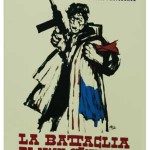
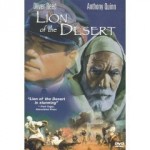
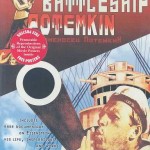
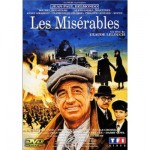
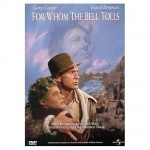
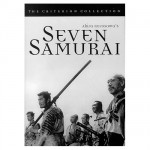

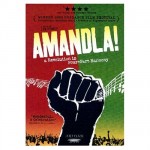
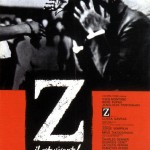
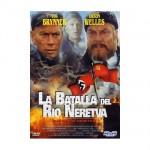
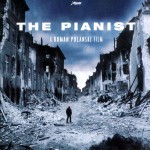
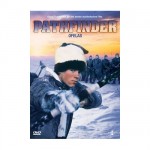
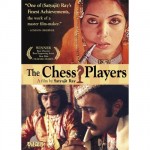
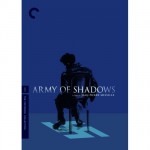



In the Name of the Father
This is an all time favorite of mine. Jim Sheridan’s searing political drama based on the autobiography of Gerry Conlon, a Belfast Catholic who spent nearly fifteen years in British prisons for a crime he didn’t commit. Conlon (Daniel Day-Lewis) and his friends were accused in the 1974 bombing of a pub near London, in which five people were killed; the only evidence against them was their own confessions, extracted from them by means of brutal police interrogations.
A must see for anyone fighting for truth and justice!
Louis Malle’s ‘Au Revoir Les Enfants’ and ‘Lacombe, Lucien’
Check out 3 films by Louise Malle on Criterion Collection.
Great list.
The list of anti-apartheid films is particularly good. Many Chinese people supported the struggle against apartheid so it forms a good starting point for arguing with them about their support for the occupation of Tibet. Some of the Western apologists for the Chinese occupation of Tibet should also be reminded of the struggle against apartheid and how similar it is to the Tibetan people’s struggle for freedom.
I’m Australian and very glad to see Rabbit Proof Fence in the list. It enraged the denialists and new-assimilationists, which is to say it was very, very good. Another powerful film about white repression and aboriginal resistance that came out at the same time is The Tracker.
More recently, Ten Canoes was a fantastic film. It was set among a people (the Yolngu) then untouched by the white invasion so is not directly about resistance. Its power resides in its ability to take viewers into very different lives.
BTW: Geoffrey Gurrumul Yunupingi’s masterful CD “Gurrumul” won a swag of awards yesterday. See if you can track down a copy.
Nama yalala and B’od rangzen!
While I was in Tibet, I happened to see some of the films of this sort which people there seemed to find inspiring (or at least cathartic). Sadly I don’t know the names. I’ll try to track them down sometime.
Great list jamyang. I hope tsundue and his friends in Dharamsala have the dvds of these films.
I heard they regularly show films at the community library they helped founded in Mcleod ganj. It will be great if you could help them get access to these dvds…
there are many young and educated tibetans in dharamsala who are interested in freedom struggle movies. Unfortunately they don’t have the dvds available with them…!
Jamyang Norbu Lak,thank you.
your “Running Dog Propagandists’ was striking, your’Black Annal..” was even stronge.
this piece is very thoughtful. please do forward us a list of books in English that will do inspire us of our cause.
Jamyang Norbu Lak,thank you.
your “Running Dog Propagandists’ was striking, your’Black Annal..” was even stronger.
this piece is very thoughtful. please do forward us a list of books in English that will do inspire us of our cause.
another thing, tibetan translation of “Black Annal ..’by Dedun Rabsel was very good, ‘Jewel in Ballot Box” was even better, It would be great if you would do Rabsel/Tibet times to translate this piece of movie list and ‘Running Dog Porpagandist into Tibetan, just a suggestion.
JN la, I am yet to finish reading your blog but I do remember a movie that I saw when I was about fourteen. I don’t know if I spelled it right “Umar Mukhta.” Have you seen it and if so what do you think of this movie?
Dawa la,
Omar Mukhtar is the original title of the film I have mentioned “The Lion of the Desert”, which you almost certainly saw at TCV. This movie has its faults but the reason why Tibetans (including myself) were drawn to it was because the story so resembled our own. A brave but badly-armed nomadic people fighting against a modern totalitarian power, while the world looked on.
Another of the great romance/liberation films loosely based on a fine work of fiction is “Last of the Mohicans,”starring Daniel Day Lewis from “In the Name of the Father” (mentioned above). Here, the Native Americans, while they’re squabbling among themselves, still get the last word, another fine fiction. But the cinematography is unparalleled–it is Michael Mann, I believe, directing–and heroism and courage lie in great dollops in every frame.
I would highly reccomend the film “Amen.”, Have you seen it Jamyang la? It is a 2002 film, and I think this one is especially important for Tibet supporters to watch, so I think Tibetans should invite their friends to watch this film with them
it revolves around two stories, during the Holocaust. One is that of an SS hygiene officer and scientist, involved in the development and use of Zyklon B, the chemical used in trhe gas chambers. He is so horrified to discover that the chemical he worked with to purify barracks after a breakout of disease is being used to murder peopl, that he attempts to Sabotage its use, and inform the vatican in a hope to put a stop to it.
the second story is that of a priest in the vatican, a young priest who is the only person who believes the officers story, and decides to take action.
It is an inspiring story, not of the victims, but of the others who recognize wrong, and decide that they are willing to stand with the victims, even if it means risking absolutely everything, for the sake of morality.
I would suggest the german film, “The Lives of Others” by Florian Henckel von Donnersmarck, which won the oscar for best foreign language picture in 2007.
It depicts Eastern German society which is held under surveilance by the secret police, Stasi. Many Chinese friends I have cried when they saw this movie.
Dear Jamyang:
Thank you for your Cimema 59 essay. I think and idea of setting a movie reference portal for Cinema ‘ 59 is absolutely a great idea.
Not all films of this genre are violent, soaking in war heroism war heroism. So often inner choice framed in auster setting determines one’s course of action.
I supplement a few more titles of freedom struggles movies
//rc
———————————————————-
Man of Marble, Andrzej Wajda, Poland, 1976
Wajda explores the world of propaganda film, the glorification of the worker, and the reality that lies behind it. Birkut (played with total conviction by Jerzy Radzwilowicz) is built up as a worker’s hero in Stalinist Poland because a person making a film wants to prove, for propaganda purposes, that Birkut can lay more bricks than anyone else, and so he is challenged to reach a new record figure. Many years later, a young film student, Agnieszka, played with just the right mix of idealism and strong-headedness by the great Krystyna Janda, is puzzled why Birkut should have fallen from favour with the authorities, and starts to uncover a can of worms turned into a nest of vipers by corruption, propaganda, and the Communist system. Wajda here is at his most openly critical of totalitarianism, and when the film first came out to rave reviews, he was admired for the bravery of his vision. A must for anyone trying to understand what living under Eastern bloc Communism was really like, and a gripping story too, with some shocking moments. This is the reason why many Poles don’t want to watch the movie any more – ironically, the highest compliment that can be given. It is too close to the truth that many people in this now thoroughly Westernised country would rather forget.
Man of Iron, Poland, Andrzej Wajda, Poland (1981)
Fictionalized documentary capture’s rise of Poland’s Solidarity movement. Viewers interested in the human stories that make up history will be intrigued by this portrait of a government reporter covering events.
It depicts the Solidarity labour movement and its first success in persuading the Polish government to recognize the workers’ right to an independent union.
The film is a continuation of the story of Maciej Tomczyk, the protagonist of Wajda’s earlier film, Man of Marble. Here, Maciej is a young worker involved in the anti-Communist labour movement, described as “the man who started the Gda sk Shipyard strike”, and a journalist working for the Communist regime’s radio station, who is given a task of slandering Maciej. The young man is clearly intended as a parallel to Lech Wa sa (who appears as himself in the movie). The film was made during in the brief thaw in Communist censorship that appeared between the formation of Solidarity in August 1980 and its suppression in December 1981, and as such it is remarkably critical of the Communist regime. It won the 1981 Palme d’or at the Cannes Film Festival.
Interogation, Poland, Ryszard Bugajski 1980
Based on a true story reflecting the Stalinist terror of the early 1950s, Ryszard Bugajski’s harrowing film was banned under martial law in Poland and only became available after the director smuggled a copy of Interrogation out of the country. Tonia (Krystyna Janda), a singer in a sleazy cabaret, is imprisoned without explanation. Days become weeks become months, varied only by the persuasion, intimidation and torture of interrogation. Janda’s outstanding depiction of a woman who becomes heroic in the face of torture and imprisonment, takes you to places few films are willing to explore.
In the early 1980s, film director Ryszard Bugajski worked under Andrzej Wajda at the Polish film studio Film Unit X. Bugajski had been developing a script about repression and brutality in Poland in the 1950s under Stalinist rule. As the studio was run by the Communist state, all film scripts had to be approved by the Culture Committee before a film could go into production. A script such as Interrogation, that was openly critical of the State, stood little chance of approval. However, at the time Interrogation went through the system in 1982, the authorities were preoccupied with preparations for the forthcoming imposition of martial law and it somehow slipped through the net. Interrogation was passed for production.
The Lives of Others, Florian Henckel von Donnersmarck, Germany (2007)
In East Berlin in 1984, the secret police, known as the Stasi, are gaining more and more control, spying on German citizens, and recruiting thousands of them to spy on each other. Captain Gerd Wiesler (Ulrich Muhe) has been ordered to find something on playwright Georg Dreyman (Sebastian Koch), so he sets up a surveillance room and listens closely as Dreyman, his actress girlfriend, Christa-Marie Sieland (Martina Gedeck), and various suspected radical friends gather in their apartment. But when Wiesler discovers that culture minister Bruno Hempf (Thomas Thieme) cast suspicion on Dreyman only so he can have his way with Sieland, the master interrogator and torture teacher starts taking a long look at just what it all is about. THE LIVES OF OTHERS was nominated for an Oscar for Best Foreign Language Film in 2007. Interestingly, during and after the filming of the movie, several of the actors (including Muhe) found out that they or their families had been victims of the Stasi–and in one case, the father of an actor (Charly Hubner) was revealed to have been a member of the Stasi himself.
Unbearable Lightness of Being, Philip Kaufman, UK (1987)
Daniel Day-Lewis stars as Tomas, the happily irresponsible Czech lover of Milan Kundera’s novel, which is set in Prague just before and during the Soviet invasion in 1968. Lena Olin and Juliette Binoche are the two vastly different women who occupy his attention and to some extent represent different sides of his values and personality. In any case, the character’s decision to flee Russian tanks with one of them–and then return–has profound consequences on his life. Directed by Philip Kaufman, this rich, erotic, fascinating character study with allegorical overtones is a touchstone for many filmgoers. Several key sequences — such as Olin wearing a bowler hat and writhing most attractively — linger in the memory, while Kaufman’s assured sense of the story inspires superb performances all around.
Closely Watched Trains, Jiri Menzel, Czechoslovakia, (1966)
Milos Hrma, a bumbling dispatcher’s apprentice at a village railway station in occupied Czechoslovakia, longs to liberate himself from his virginity. Oblivious to the war and the resistance that surrounds him, he embarks on a journey of sexual awakening and self-discovery, encountering a universe of frustration, eroticism and adventure within this sleepy backwater depot. Milos becomes involved in a plot to blow up a German ammunition train, but when the plan backfires, he is forced to commit the ultimate act of courage.
Cry Freedom, Dickie Attenborough, United Kingdom (1987)
Steve Biko was one of the heroes of the anti-apartheid struggle in South Africa. A proponent of non-violent activism and founding member of the influential Black Consciousness Movement, he died in police custody in 1977, aged 30. In Cry Freedom, that’s half way through the movie. Attenborough’s film, while an ode to the life and martyrdom of the man, is in fact the story of Biko’s friend, Donald Woods.
Woods (Kline) was a real-life hero himself. Editor of a South African newspaper, he was one of the leading white voices in the anti-apartheid movement, risked life and limb to investigate Biko’s death, and eventually had to escape the country (dressed as a Catholic priest) to publish his findings. Cry Freedom describes the journalist’s extraordinary experiences from his first meeting with Biko in 1975 to his dramatic flight into Losotho less than three years later. In so doing, the film confirms with sympathy and a deal of emotional clout what we all knew — that Biko was a truly great man, that apartheid and the regime enforcing it were inhumane, and that love must overcome hatred.
Cleverly, it does all that while beating to the pace of a thriller, reaching fever pitch after Biko’s demise when Woods, hounded by a gnashing John Thaw (playing Minister Of Police, James Kruger), attempts to uncover the brutal truth of his friend’s death.
Singing Revolution, James Tusty, Estonia (2007) (Documentary)
The Singing Revolution traces the history of Estonia and the Baltic region from its very roots between 5,000 to 8,000 years ago through to the Singing Revolution. It tells of the conquests that Germans, Danes, Swedes, Poles and Russians had over the country and the many hands that this small nation passed through over the centuries.
The movie concentrates on acts of peaceful defiance of Estonians against their Russian occupiers through peaceful protests. The story is one of the step-by-step reestablishment of Estonians independence without violence and through mass demonstrations of unity and singing.
Zelary, Ondrej Trojan, Czech Republic, Slovakia, Austria, (2003)
Two very different people meet and fall in love in “Zelary,” the Oscar-nominated (Best Foreign Language Film, 2003) romantic epic from director Ondrej Trojan. Eliska, a sophisticated medical student, first meets Joza at a Prague hospital, where her blood saves the injured sawmill worker’s life. But Eliska also works with the Czech resistance and when she’s betrayed to the Gestapo, Joza agrees to hide the young woman in his remote mountain village of Zelary. Forced to marry the rough-hewn peasant and pose as his wife, Eliska is at first defiant and angry. But with the passing of time, she comes to realize that there’s more to Joza than first meets the eye. And so, even as the war rages around them, Eliska and Joza soon find themselves deeply and passionately in love, until an unexpected twist of fate threatens to put their extraordinary romance to the ultimate test.
The Sixth Sun: Mayan Uprising in Chiapas, Saul Landau, USA (1995)
The film does a good job of explaining in unsensationalized terms what the Zapatistas are about, and how U.S. corporations, NAFTA, and the WTO are directly responsible for the uprising. The Zapatistas are not depicted here as terrorists, although they may well strike terror into the hearts of the world’s richest CEOs, (and for good reason), but as defenders of peasants’ rights who chose guerilla tactics after more civil methods were closed to them by an indifferent government.
Paradise Now, Hany Abu-Assad, Belgium, (2005)
The story places two close friends, Palestinians Said and Khaled, recruited by an extremist group to perpetrate a terrorist attack in Tel-Aviv, blowing up themselves. However, things go wrong and both friends must separate in the border. One of them, maintaining in his purpose of carry the attack to the end, and the other will have his doubts about it.
In Nablas on the West Bank, Said and Khaled, who have volunteered to be suicide bombers, receive word it will be tomorrow – the cell’s first operation in two years. They’re shaven and shorn, in black suits to pose as settlers in Tel Aviv for a wedding. Something goes wrong at the crossing, they’re separated, and the action is postponed, long enough for renewed questioning of what they’re about to do. Suha, the well-educated and well-traveled daughter of a martyr, challenges the action. She likes Said and has her own ideas. “Under the occupation, we’re already dead,” is Khaled’s analysis. Fate and God’s will seem to drive Said. We must be moral, argues Suha. Can minds change?
Ashoka, Santosh Sivan, India, 2001
Prince Ashoka, heir to the Magadha Kingdom, bowing to his mother’s demand forsakes his princely status and goes to live in the wild for awhile. There he meets and falls in love with Kaurwaki. He identifies himself as Pawan, not wanting to disclose his identity yet. Ashoka has to return to Magadha, but when he returns to find and wed Kaurwaki, he is told by Bheema that Kaurwaki and her brother Arya have been killed. Devastated Ashoka returns home. On the way home he is attacked and Devi, of the Buddhist faith rescues him and tends to him till he gets well. As a result, Devi’s marriage to her groom is cancelled. Ashoke weds her and brings her to Magadha, only to be told by his father that since Devi is not of the same race as he, she cannot be welcomed. Ashoka leaves with Devi and lives in Ujjaini. Soon Devi gets pregnant, and this arouses jealously and hatred amongst Ashoke’s step-brothers. As a result they plot to kill Devi, however, their plans are foiled by Ashoka’s mother, who is killed. Ashoka swears to avenge his mother’s death by killing his step-brothers one by one, except for one, who has led to Kalinga. Ashoka asks the ruler of Kalings to turn over his step-brother to him, and they refuse. Ashoka swears to raze Kalinga to the ground. Ashoka is unstoppable. Even his close friend, Virat, too, is unable to stop Ashoka. Ashoka proceeds to war, little knowing that the queen of Kalinga is none other than Kaurwaki, who is still alive.
Lion of the Desert, Moustapha Akkad, Finland (1981)
The movie tell us the true story of Omar Mukhtar, a Libian guerrilla fighter who fought against the Italians who occupied Libya before WW II.
Omar Mukhtar is played by Anthony Quinn, who did a great job. Ollie Reed was brilliant as general Graziani also Rod Steiger was successful playing dictator Benito Mussolini. Sir John Gielgud plays a Libian traitor who helps the Italians. A brilliant cast!
“Lion of the Desert” is a great epic movie with a lot of action, very good battle scenes, good conversations and excellent locations. Director of photography Jack Hildyard did a great job and the music is very good. (conducted by Maurice Jarre).
“Last of the Mohicans”starring Daniel Day Lewis. Its similar to that of the Wind that shakes the barley but its about native Americans and their struggle. Slow but awesome action (axe and gun stuffs)but not to forget what the director was trying to portray in this movie. I give 5 for it.
Production Status: Released
Genres: Documentary
Running Time: 1 hr. 38 min.
Production Co.: Simon Wiesenthal Centers, Moriah Films
Its about Hitler’s attempt to eradicate the Jews. The film’s set up in September 1939 and concludes after the concentration camps were liberated at the end of WWII.
Jamyang la,
You almost blew my cover. THanks.
D.
A good South African film is “Mapantsula”. It was one of the few Black African films about apartheid and its effects. A young embittered criminal becomes radicalized after he can no longer deny the systemic racism and oppression. I think it is the best films on the subject. Particularly the ending, when the main character is finally arrested and told he must submit the names of those he knows are in the resistance. His shout of “No!!!” which ends the film will give you shudders of inspiration. Very encouraging in its portrayal of the human spirit which refuses to be broken.
For Northern Ireland, “The Boxer” is one of the best because it shows not only the oppression but also the sectarianism and strife between Northern Irish communities, and also the internal oppression that existed under some IRA dominated areas. I liked it particularly because it dealt with real northern Irish people, without all the stereotypical nonsense other films on the Long War are full of.
‘Au revoir,les enfants’ (1987) by Louis Malle
would be a good addition to all the other films listed.
I agree that we should watch these movies. But practically speaking all these are elitist choices. Only elite Tibetans living in the west and in Dharamsala can buy and watch these movies.
If people who have recommended these movies on this blog genuinely cares about empowering the Tibetans, then they should find out a way for the majority of Tibetans in exile, most of whom live in far flung Tibetan settlements, to get access to them.
Buy a dvd and donated to a Tibetan organization in India who can show these movies to many young Tibetans who are genuinely interested in it…
Just recommendation is not enough, although I appreciate it. I can also do this and do it often when it comes to books. But I also loan my books and encourage my freinds to read them, and after reading them invite them for a discussion….
Otherwise if we want to recommend only, then we can google it and find out the best movies on freedom struggle….
Regards,
where can i write to shri jamyang norbu la?email?
There is another Chinese propagandist, read yourself:
http://www.sltrib.com/opinion/ci_10359098
Palden
we usually tend to cross bollywood as a source of inspiration but I think Chakde India is a great movie and inspiring too.
from the movies above, my personal favourite is The pianist. Man, everyone need to see this movie. It was very moving. After watching the movie, I read the book too. Movie in many ways are adjusted to fulfil the demands of the viewers and less accurate. Same with the book to satisfy the reader. But I think the book does more justice to the real story. You will get to know more details and understand the plot better. Anyways, for movie was good enough.
Just read the article, its great.
I have just seen last night freedom struggle movie on Red Indian of America. ” Burn my Heart at Wounded Knee”. Must see movie for Tibetans.
At the risk of taking this thread off-topic, I want to note how well the article Palden links above exemplifies the kind of “independent thinker” who is so attracted to Tibet-bashing and especially to Dalai Lama-bashing. Declaring to the world that you aren’t going to be taken in by warm and fuzzy thinking or the charisma of world leaders and superstars must provide them with an irresistably warm and fuzzy feeling. They seem only too willing to recite the CCP position chapter and verse in order to get that feeling.
I’ve got one of these “independent thinkers” just a few work stations away from mine and I’ve had several lunches ruined listening to his BS about Tibet and China and not being able to get a dissenting word in edgeways.
Palden,
That writer is expressing the new “cool,” as it were. Since the Free Tibet idea garnered a lot of support, many intellectuals have attempted to detract and deflate this by proving themselves smarter than the average bear. It’s a mind game and has nothing to do with Tibet itself if we look deeply into the exercise. It’s basically an attempt by hack-writers to make a name for themselves in some pretense of “independent” thought. Funny how I never hear of such writers writing any of their “independent” thoughts down about religion and politics here in the US. It’s always some exercise to discredit other people’s movements.
Notice that this writer never delves into Tibetan people themselves much. Nor does he cite any Tibetan activists or activist opinions. His mention of the Dalai Lama is perfunctory and is what you can expect from someone who received his info from Xinhua and company.
Funny. There is a disconnect between what this writer is spewing and what I have heard from most people here on the streets and in bars when Tibet became the issue of discussion.
Gangkyi,
You raise a valid point. But I do think Jamyang’s idea was to generate discussion of the use of cinema as inspiration. There are many ways to bring these films to the people.
Jamyang,
Just for the sake of those who may wish to, how about posting a mailing address to a film library, such as in Dharamshala, where people could send any dvds. Perhaps, we should all pony up and send those films we think are inspiring.
Hugh,
Thanks! at least you agree that we must do something to bring the dvds to Tibetan youth in India. There are many Tibetan youngsters who are genuinely interested in watching such kind of movies. I myself am a Tibetan living in Dasa and have noticed the determination and courage in lots of young Tibetans to stand up for truth and justice that has been denied for so long to Tibet.
We need to harness this courage and determination in a better way and guide the young Tibetans by showing them such movies…They are the future of Tibet, they need to be empowered. Most of the Tibetan organizations, TGIE included, are interested only in promoting their own ideology or vested interests…Hardly any body does something that can really wake up the Tibetans from deep slumber…Most of that that is being churned out by the organization here are mere lies and propaganda…Instead of empowering them, they further pacify them by organizing all kinds of ridiculous things like regulating them to recite Buddhist prayers and mantras…Tibetans don’t need medicine for heart, they need for their mind, their brain. They are totally blinded to what’s happening to them and their country, they are totally blinded to the fact that they live in a Darwinian world, where might seems to be the right…
No more material facilities for Tibetan refugees in and around India…We have the dubious distinction of the world’s most successful refugees. What we need is genuine empowerment, that is the empowerment of thier minds or brains…
thank you jamyang la for the list of movies that you recommended…I tried to find out these movies here in Dharamsala, but there seems to be no shop that sells these dvds….
I am begging for the CDS from Tibetans and Tibet supporters, and the commentators here, who all seem to be living in the west and are fully empowered…this is the only good thing that we Tibetan refugees seem to be at: begging or the Jindak mentality…
Bod gyalo!
Gangkyi
Get together some friends and start a film society. I will send you some DVDs and I am sure others will also. Talk to Tenzin Tsundue who is a film buff and has organized shows before. Talk to Tenzin Sonam (the filmmaker) for ideas. It would be great to have Cinema ’59 in Dharamshala. Dharamshala is important because there are so many young people there, straight from Tibet and elsewhere who need the ideas and the stimulation.
What an excellent idea!
My family is in Hunsur Rabgayling Settlement in South India. There is a huge Tibetan population down there.
I was wondering if anyone is willing to partner with me to send some of these DVDs to Bangalore,
Bylakuppe, Hunsur, etc.
How about a group of people each taking care of a settlement/city? I can help out with Hunsur
As I am not in India, I need a contact person to whom I can send the DVDs.
I think putting Tibetan subtitles on some these movies would be great, it would reach
more people from all over Tibet and inspire them. Dubbing too is an excellent idea, but might be a bit more difficult, since it requires finding and coordinating several fine vocal actors, to insure these films don’t sound comical. Where as subtitles, only requires one fine Tibetan writer, and someone with a dvd editing software. Is there anyway we can work on this to get it started?
Hugh, I wrote pretty extensive analysis of the author’s source and his ignorance about “actual” situation. Since it is very long, the editor asked me shorten it to not more than 200 words, so it will be published.
Now I have to condense all these contents….. I might post my original writing here.
Tsenpo
Not to take things off topic, but I saw a good doc about China’s cyber warriors, by journeyman pictures. This may be obvious stuff, but it’s well layed out, the youtube link below.
http://www.youtube.com/watch?v=qP-9qmSCe7o&feature=user
also you can check out an olympic post mortem, by journeyman, but this has no English sub-titles yet.
http://www.youtube.com/watch?v=rxZsM47AZa8&feature=user
This is not to dishearten or in any way discourage the cinema59 discussion. I am writing this because I organized a film festival in dhasa along with sft and tsundue some years back. The selection was more art house and foreign film. At that time I had a huge collection of foreign films bought from Palika Bazar and I wanted to share it with others. The whole idea was to introduce young tibetans to all these important filmmakers and their work. Some of the films we screened To Live dir Zhang Yimou, My Own Private Idaho dir Gus Van Sant, Withnail and I dir Bruce Robinson.
Anyway we did everything we could, rent a place, rent a projector, made posters. I was completely excited and nervous about the project. It was more or less my creation and I wasn’t sure how people would take it.
So we were standing there, outside the community hall on Bhagsu road under these big black clouds waiting for people to show up and see what we have to offer. I remember very clearly this strange feeling of waiting there for hours without anyone showing up except for some foreigners. So in the end we ended up screening them for us (the sft gang) and bunch of inji tourists.
I hate to make false assumptions and conclude. It wasn’t like a dead end that we experienced that day. May be we didn’t reach out to as many people as we thought we did or may be the timing wasn’t right. I guess I wanted to share it here so that if somone’s planning on doing similar screenings may be they can start out with smaller groups and best if you can provide tibetan subtitles and then perhaps move on to bigger ones depending how well they are received. i know the whole idea of merging cinema and freedom movement is really exciting but we should always be aware of who our audience is and how we could best engage them.
I definitely second Tenzin Jangchup’s concerns. In any action there’s a need to make it new, fresh, cool, whatever. And film festivals don’t really appeal to a big mainstream crowd. A much better approach would be talking to local restaurant owners and getting them to ditch whatever bollywood fluff they’re playing on the tv every day and replace it with some of these films, at least for part of the time. That seems to be how Tibetans in Tibet do it.
Rich,
Do you mean local cable operators? I believe they have time-slots when they show new releases (mostly Bollywood) and local news videos. So one way to do is to talk to these people and may be convince them (which I don’t think would be a big problem provided that you bring the DVD) to play atleast one serious film a month. This way people don’t have to go to some specific place if they don”t want to and still be able to watch these films.
Really I just meant establishments that show their own vcds/dvds. That’s how it goes in Tibet these days. Lots of times people just bring their own movies or music videos to watch at the zakhang/jakhang. Sorry it’s been too long since I’ve been in India for me to remember how places do it there. In any case, getting the movies played by local cable operators sure sounds like a good idea too.
I just watched a movie of George Orwell’s Nineteen Eighty-four with Richard Burton as O’Neil and John Hurt as Smith. If you search George Orwell 1984 you will get it.
The party members in their Mao-suits like blue over alls are so reminiscent of the mindless Chinese red gaurds. The film is great but it is best to read the book.
Sorry, I meant say that you can find the film of Orwell’s Nineteen Eighty-four on youtube.
Thank you Jamyang la for your willingness to send a few dvds to Dharamsala. I know Tsundue and a few other activists who show such kind of movies occasionally.
I work in a Tibetan aorganization, so I can’t launch a formal film society, (for that I have to resign from my job) but what I can do is start a kind of “informal film society”. If you send the dvds, then we can show it to youngsters here, though not on a mass level…
I can begin from my own organization, where we have some young staffs who are really enthusiastic and determined to work for them. They are not the usual run of the mill activists, but silent revolutionaries…
My friends and I can then distribute these dvds to other young Tibetans, including many Tibetan intellectuals from tibet that I am freinds with…
Regards,
Tenzin Jangchup,
I agree with you totally. If you launch a formal film festival in Dharamsala, most of the audience would be inji tourists…
That’s why I suggested to Jamyang la that we Tibetan youth in Dharamsala can start a sort of informal film society…
We can begin this movement from a grass root level. you don’t have to organize a festival in a formal way, if you do this, only inji tourists will come and enjoy it….
there are many tibetan young staffs who wants to see such movies, but they can watch it openly for fear of backlash from the establishment…
Tenzin Jangchup,
Correction: THERE ARE MANY YOUNG STAFF WHO WANTS TO SEE SUCH MOVIES, BUT THEY CAN NOT WATCH IT OPENLY FOR FEAR OF BACKLASH FROM THE ESTABLISHMENT.
I would also add to your list the movie Red Psalm (aka The People Still Ask, French Title: Psaume Rouge) [http://www.imdb.com/title/tt0067467/maindetails] by Hungarian director Miklos Jancso. It was released in 1972. Since I saw that movie long ago, I cannot add more comments but I remember how much I was impressed by this movie.
Best regards
take a break and have a drink, and forget about the rangzen revolution show…
Chang
Why don’t all you Chinese take a break from kissing the ass of the Communist Party. Can a whole nation of people be so pathetically servile?
FREEDOM STRUGGLE IN BOLLYWOOD MOVIES
Ever thought how it was all around when ears heard only one sound – sound of rebellion. When youth came on the street and walked on undeterred by bullets or batons. When martinets were made to pay for their every harsh move. When a flimsy man with a spinning wheel and a stick stirred the depraved conscience of millions, the picture of the freedom struggle would have always appeared blur in your mind. However, thanks to Bollywood movies, which treasured precious moments of Indian history.
Bollywood always faired well on the ground of patriotism. It has always given its voice to the ideals of the freedom movements. The credit of making movies based on the freedom struggle goes one Stalwarts of Bollywood – Manoj Kumar. His spectacular performance in the movie ‘Shaheed’ which was released in the year 1965 depicted many shades of Bhagat Singh.
It made viewers to shed tears of both joy and sorrow to watch their hero fight valiantly for the mother India and finally dissolving in it. Several years later, Bhagat Singh re-visited the silver screen in the movies The Legend of Bhagat Singh and 23rd March 1931 to tell his people again that he did his bit by sacrificing his life so that no one jeopardizes it again.
The movie Rang De Basanti which was released in the air 2006 presented an interesting concoction of two epochs. The story revolved around different individuals and their aspirations. In it an endeavor was made to compare and contrast the lives of the characters to show that they still amongst us and are in the middle of some identity crisis. The movie also threw some light on the falling standards of the youth where the characters were shown guzzling down beer down their throats and forgetting the contribution made by the freedom fighters in their frivolity. These movies also allowed the viewers to pry into the lives of Pandit Ram Prasad Bismil and Ashfaqulla Khan.
The iron willed Mahatma Gandhi was often presented in several movies sporting his trade mark smile and kind demeanor. His portrayal in the movie ‘Gandhi’ starring ‘Ben Kingsley’ won plaudits for his impeccable storyline and a resplendent performance given by Ben .
He appeared again much after his death to do what he did the best. In the era of freedom struggle he guided India to freedom. Even this time in the movie ‘Lage Raho Munna Bhai’ he did the same by rescuing some troubled minds including the protagonist’s mind’s from inner fetters of ego, superstitions etc.
—Bollywood101.com
The title of the above story is “Freedom Struggle Stories in Bollywood Movies”. I missed the word “Stories” in the posted article.
Jordhen la,
Great idea. Dubbing may be a more difficult alternative to sub-titles, it is more effective. TIPA was attempting to dub Battle of Algiers. A cheaper way might be to have someone just do a narration of the story in a way that wouldn’t intrude too much into the movie. Someone really should dub “Gandhi” in Tibetan.
Tenzin Jangchu la,
My sympathies. I don’t understand what might have gone wrong with your efforts, but earlier we always managed to get a big crowd in Dharamshala for AMI’s film festivals, retrospectives, and things like that. Tibetan’s love movies, but perhaps you might emphasize a war movie in your selection. That ought to get em. I know this will horrify our inji admirers but all the old Tibetans I knew loved war movies and Westerns.
Tsering Chodon la,
I talked to Tenzin Tsundue la and he told me he has contacts in the South who are showing films to educate the Tibetan public. Tsundue has set up a library in Dharamshala where they also show films and it might be the place to send DVDs.
Dear Gyen la,
continuing from our discussion in Dharamsala last autumn, it’s good to see your writing “Cinema 59” posted on different links. The younger generation Tibetans remain grateful to you and many others who left exemplary legacy from which we draw inspiration. Theatre, writing, music, photography and cinema are few genres of art Tibetan youngsters are dabbling in today, but, still there is a need of serious persuasion.
With an Indian writer and friend Pankaj Mishra we have set up new library “Dharamsala Community Library” in Mcleod Ganj, on the temple road, next to Tayang coffee house. The main aim is to create an intellectual revolution in the long run, but firstly it is to encourage some reading habit in our community.
A robust intellectual movement can really help the struggle presently and for future help create a truly independent country. Internal strength is the true power of revolution.
we are now collecting good films in any format. We plan to organize film screenings in Dharamsala. Yes, cinema is the contemporary language of understanding and expression. If the films that you have written about in cinema59 be in our collection, there is a ready audience here. It’s difficult to get hold of these films in good quality around here. I will appreciate if any of your readers could support us.
my email address is tentsundue@yahoo.com
let the ball roll
thank you
tenzin tsundue
Dharamsala
Can we take a short break from films of freedom struggle, and may I announce one cherishing news for the people of Toronto who might be interested.
As the prestigious Toronto International Film Festival kicks off today, the Bollywood bombshell Preity Zinta will be at the festival on September 6 to release her new movie “Heaven on Earth” which was filmed in Brampton,(Ontario)and was directed by Deepa Mehta. For more info, visit tiff08.ca
Cheers!
Is anyone out there suffering from celebrity disease?
Pal
I am not much of a movie person but I have some good books on TIbet which I will bring when I travel to India next. I would like to do more than that but at the moment my tuition fee is not very sympathetic. But if any legitimate organizaiton needs any specific movie or book I will certainly get it.
Another awesome Bollywood freedom struggle movie is Lagaan (2001), directed by Asutosh Gowariker.
Plot summary: “This is the story about the resilience shown by the Indians when they were under the British Rule. They are already taxed to the bone by the British and their cronies, but when Jack Russell announces that he will double the Lagaan (tax) from all villagers, they decide to oppose it. Leading the villagers is a handsome young man named Bhuvan, who challenges them to a game of cricket, a game that is to be played by veteran British cricket players, versus villagers, including Bhuvan himself, who have never played this game before, and do not even know a bat from a piece of wood. As the challenge is accepted, the interest grows and attracts Indians from all over the region, as well as the British from all over the country – as everyone gathers to see the ‘fair play’ that the British will display against their counter-parts, who are aided by none other than the sister, Elizabeth, of Captain Rusell.”
Okay, Alexander Chang
But you should know that a lot of my taking a break and drinking has resulted in me gathering more friends who now wish to support Tibet.
I have one question for that tsundue guy who is standing above me at comment # 47 who seems to have visited this site in passing. Why did you, I repeat, why did you attempt to go to Tibet, without proper document? I know what you are going to say but, let’s hear straight from your mouth, uncensored.
Jamyang,
I love war movies too. War movies, and also, personally, I love zombie movies, ever since i was a little snot nosed kid. So the fact that Tibetans love war movies wouldn’t bother me one bit. (Though i must confess that as a gaelic-speaking Irish descent person, my inji creds are lacking.) As for the zombie movies, well….hell i like them. and I think they are a funny commentary on any society that wishes to homogenize its population.
Tenzin Tsundue,
Thank you for providing a contact point. I will not only seek to send dvds but also get my friends in on it. Everyone else who reads this should too.
Do you have any requests or any ideas as to films you would like to receive copies of?
The problem with zombie movies is that it just reminds me of – you know who. Sucks all the fun out of everything.
Jamyang,
Someone should make a zombie film in which one of the symptoms of the infection that leads to “undeath” is a little bright red star on their foreheads. Hahahaha. I think a lot of us have made this connection at any rate.
I can see your point though. I think the Romero directed zombie films were a great commentary on consumerism and other unthinking swarming activities. Every time I have to go to a shopping center, I chuckle now. Especially when I see a horde of people waiting from some new product that they have been infected with the desire for. But I am digressing in the bane of writers known as Tangent now….
i may be wrong. but what i have noticed is that a majority of our tibetan youth are not very keen on reading. So, cinema (if not reading)can be of second great importance in understanding the concept of human conscience, justice , equality and freedom. in this line, i also strongly recommend denzel washington’s ‘the greeat debaters’.
Jamyang la,
soon there will be at least three alternative film screening programmes running in Dharamsala. Cinema59 list will be followed religiously by a group supported by Wen and Sonali. I will update when the other two programmes become confirmed.
The main aim is create an intellectual movement, a moment to pause and think and question.
And yes, cinema does it well. It is the language of now.
Dear Hugh,
you may send us any quality films. The films will go to the film library, which is a part of Dharamsala Community Library. Email me (tentsundue@yahoo.com) when you want to send us films.
Guri,
Get me a paper to go to Tibet, and I will be first one to go. At this point, no one, not even George Bush or Obama, forget about India can give me a paper to go to Tibet; and since there is no papers, hundreds of us tried to go Tibet without it, if required we will do it again this way. join me.
The march has created such scare in Hu Jintao that he requested Manmohan Singh to ‘control the Tibetans’. Now the Indian govt has made it mandatory for me to make entry and exit permit to travel out of Dharamsala town. Guri, do you want to see my dharamsala visa?
tenzin tsundue
Stop talking about Dharamsalsa visa, what this Prime Minister or that President said about Tibetans in exile. And start your prime ministerial campaign as 2011 is coming in few years. I want you to become the next prime minister of Tibet.
Tenzin Tsundue la,
I promise to send you the 7-part John Adams DVD, and Seven Samurai. You will love them. will send you more when I can. Best of luck to CINEMA ’59 (Dharamshala). May your projection lamps never burn out.
Tsering Choden la,
Can you get someone to start CINEMA ’59 (Honsur or Bylakuppe). I will send what DVD’s I can to them.
Readers, email me if you actually set up a film club in whatever city or settlement you are in. I promise to send you a CINEMA ’59 sign (designed like a movie theater marquee). I have an artist friend working on it. It will be ready soon.
JN-la
I dont have a contact person in my settlement who can coordinate such an event.
October to end of January is harvest season + sweater selling season in the settlements. Except for the very young and the very old, most young people will be gone to sweater selling. Thus, I was wondering if anyone who is in India can coordinate this. I will send a note to Tenzin Tsundue la to see if he has network in the south.
Jamyang Norbu la,
A group of us in Dharamsala is organizing a regular series of weekly topical community forums and film screenings. We will be showing Cinema ’59 films every other Saturday, starting this weekend. In your opinion, which 4 or 5 films would you recommend starting off with?
Ahem! don’t call me sissy, but I would like to suggest the epic romance, war film: Dr. Zhivago (1965). Set during the Bolshevik revolution, starring Omar Sharif. it’s film I find quite powerful, in that one get a small glimpse of the kind of turmoil Tibetans might have experienced during the cultural revolution. And as a bonus it also has the young Julie Christie as Lara. I will try and get a DVD to send.
I’d like to ask the thoughtful folks reading this blog to take a look at ICT’s “Campaign 2008” page and send in your thoughts. They’re requesting emails or video responses on what people think the next US presidential administration should do about Tibet. So far all the responses I’ve seen are injis, and many of them lack substance (how typical…). This is a chance to show ICT (and hopefully the policy people they share the results with) we’re fed up with the fluff, the patronizing and cynical treatment Tibet gets, and the “HHDL photo op” mentality of politicians. Here’s the site:
http://www.savetibet.org/campaign2008/
It has instructions on sending in your written or video responses.
Cheers and Bhoe gyal lo!
dear all,
I think its a swell idea to organise a movie fest bringing relevance to our freedom struggle and more on human spirit. we ought to keep the momentum alive as tibetans’ “semshook” tends to go dormant.
and i feel the movie fest should be done on a larger scale. like.. after dhasa, u should take it around all the tibetan settlements in india. n heck!if well coordinated, all around the world where u have tibetan communties.
many a times i feel there is a certain disconnect within the scattering tibetan people.
n yeah.. try to make it not so intense n revolutionary war movie types. try to birng in all genres to have the right mixture n to provide the audience a great variety. i bet not all tibetan youngsters will come to see the movies just to get inspired. many will come on the look out for some entertainment as well.
thanks!
Tenzin Tsundue,
I have a some DVDs of films to send already. When I am finished collecting the first catch, I’ll email you. One of my other cinema-loving friends is keen on the idea too and is trawling for more titles.
hi,
Recently i watch tibetan film which is called Tsampa to Pizza, which is worth to watch, specially younger generation of tibetans. i was really moved and i wanted to make my brother to watch this film, unfortunately it was not released so far,
Thank you Jamyang la for this list and your ongoing work.
I heard Philippe Sands (auth: Torture Team) say that one his favorite movies/scenes is the final verdict from ‘Judgement at Nuremberg’.
http://www.youtube.com/watch?v=N3BwK51YFgQ
Justice for Tibet!
http://www.semshook.com/
beautiful articles!!!
It’s perfect time to make some plans for the future and it is time to be happy. I have read this publish and if I may just I want to recommend you some fascinating things or advice. Perhaps you could write subsequent articles relating to this article. I desire to read even more issues approximately it!
I much like the useful information and facts anyone contribute towards your content regularly. I’m going to save your blog site as well as analyze all over again below generally. I am just fairly positive I’ll master quite a few fresh material below! All the best for! I much like the useful information and facts anyone contribute towards your content regularly. I’m going to save your blog site as well as analyze all over again below generally. I am just fairly positive I’ll master quite a few fresh material below! All the best for!